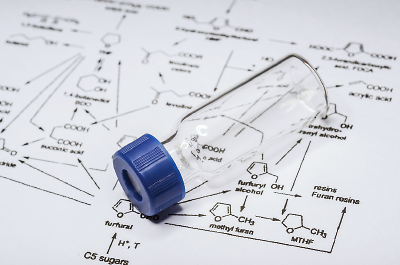Metabolites Offer New Clues About Medication Response
Abstract
The nascent field of pharmacometabolomics is hoping to use the thousands of chemicals circulating in the body as objective biomarkers that can help identify which patients will respond best to psychiatric medications.
Over the past decade or so, mental health researchers have become increasingly aware of how pharmacology and genomics can inform their efforts to improve the response of patients to prescribed medications.

While there have been some promising breakthroughs—recent studies of note have uncovered genetic variants that could be linked with response to acamprosate (for alcoholism) and clozapine (for psychosis)—more often than not efforts to mine the genome for biomarkers have come up empty.
This is especially true of efforts to identify biomarkers for depression.
According to Richard Weinshilboum, M.D., a professor of pharmacology at the Mayo Clinic, there are a couple of factors that may explain the disappointing returns.
“Phenotypic heterogeneity [in depression] is a major problem” when trying to identify biomarkers for depression, he told Psychiatric News. For example, while anhedonia (loss of feeling pleasure) is considered a common symptom of depression, not everyone with depression reports anhedonia, nor does everyone with anhedonia suffer from depression.
A second factor that complicates the ability of researchers to uncover biomarkers for depression involves how patient response to treatment is measured. While sobriety and symptoms of psychosis are relatively objective clinical states, measuring mood can be more subjective.
“What we need is to move closer to a biological phenotype for depression,” he said.
In that regard, another field of “omics” might provide help—metabolomics.
“Genes can only tell you what might happen, but metabolites are a reflection of what is happening once you introduce something like medication into a body,” Oliver Fiehn, Ph.D., a professor of molecular and cellular biology at the University of California, Davis told Psychiatric News.
Metabolomics relies on deep phenotyping, acquiring metabolite samples of patients (typically from blood or urine) before and after they take medications to identify metabolic parameters that correlate with drug response. These metabolic profiles are then used to inform genomic searches.
In 2011 Fiehn and colleagues analyzed about 100 common metabolites in 20 depression patients who achieved remission using citalopram along with a comparable set of non-remitters. Their analysis revealed that remitters had much lower levels of the amino acid glycine in their blood.
These results led them to compare several genes related to glycine metabolism in two different sets of patients enrolled in depression studies. They discovered a variant in the gene for glycine dehydrogenase (which breaks down excess glycine in the body) that was associated with a better outcome after taking selective serotonin reuptake inhibitors (SSRIs), such as citalopram.
While glycine might seem an unusual marker for SSRIs, Fiehn noted that it is a neurotransmitter (particularly abundant in the spinal cord) in addition to an amino acid, so there may be some biological interactions that are worth pursuing.
Earlier this year, Weinshilboum led another study that looked at metabolic changes in response to citalopram (and the related escitalopram) therapy. The group analyzed a set of 31 metabolites that were all ringed molecules such as serotonin, tryptophan, or vitamin A.
Similar to the glycine studies, the researchers saw that a greater drop in plasma serotonin concentration following SSRI treatment correlated with a strong medication response; a subsequent genome-wide analysis using this metabolic profile uncovered two genetic variants linked to positive outcome.
“These are two genes that no one probably would have thought about as associated with an SSRI—in fact [one of them] didn’t even have a name when we initially made the connection,” Weinshilboum said, highlighting the potential of metabolomics to uncover unexpected connections.
While such results are encouraging, Fiehn cautioned that there are multiple obstacles to overcome as the field of pharmacometabolomics moves forward.
“Metabolites come in more than 50 shades of gray,” he said. “There are thousands and thousands of different chemicals in our bodies, and unlike DNA or proteins that are built from discrete building blocks there is no common denominator for metabolites.”
Because current technology allows only for a limited number of related metabolites to be analyzed together, Fiehn noted it will take a while to accumulate and validate a comprehensive library of metabolic profiles that might be predictive of drug response.
Another challenge for the field moving forward is whether the activity of metabolites in the blood accurately reflects what goes on in the brain.
Biological tests on any genetic variants identified through a metabolite-guided process—usually in cultured lab cells or animal models—can offer insight as to the role metabolites might play in the brain.
Despite these and other hurdles, Fiehn is optimistic about the future of metabolomics: “These studies are bringing us to a more thorough understanding how these medications operate which helps with choosing both current treatments and designing the next generation,” he said. ■
“Glycine and a Glycine Dehydrogenase (GLDC) SNP as Citalopram/Escitalopram Response Biomarkers in Depression: Pharmacometabolomics-Informed Pharmacogenomics” can be accessed here. “TSPAN5, ERICH3 and Selective Serotonin Reuptake Inhibitors in Major Depressive Disorder: Pharmacometabolomics-Informed Pharmacogenomics” is available here.



